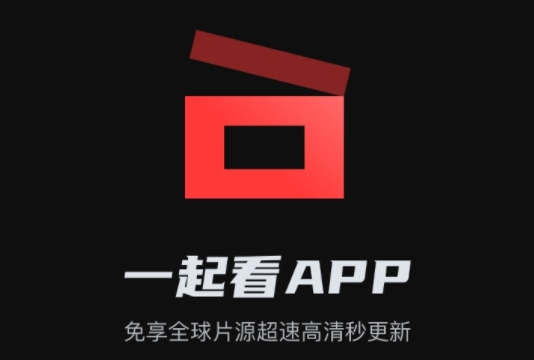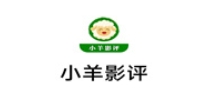最新下载
热门教程
- 1
- 2
- 3
- 4
- 5
- 6
- 7
- 8
- 9
- 10
Java中IO流代码实例解析
时间:2022-06-29 02:17:01 编辑:袖梨 来源:一聚教程网
本篇文章小编给大家分享一下Java中IO流代码实例解析,文章代码介绍的很详细,小编觉得挺不错的,现在分享给大家供大家参考,有需要的小伙伴们可以来看看。
I/O简介
I/O是Input/output的缩写,在java中,对于数据的输入和输出以流的方式进行。java.io包下提供了各种“流”类和接口,用以获取不同种类的数据,并通过标准的方法输入或输出数据。
输入输出都是基于内存的角度来说的。输入:读取外部数据(磁盘、光盘等存储设备的数据)到程序(内存)中。 输出:输出output:将程序(内存)数据输出到磁盘、光盘等存储设备中。
流的分类
按操作数据单位不同分为:字节流(8 bit),字符流(16 bit)
按数据流的流向不同分为:输入流,输出流
按流的角色的不同分为:节点流,处理流
节点流:直接从数据源或目的地读写数据。
处理流:不直接连接到数据源或目的地,而是“连接”在已存在的流(节点流或处理流)之上,通过对数据的处理为程序提供更为强大的读写功能。 相当于是二次包装。
Java的IO流共涉及40多个类,实际上非常规则,都是从这4个抽象基类派生的。由这四个类派生出来的子类名称都是以其父类名作为子类名后缀。
字节流和字符流常用API
InputStream
int read():从输入流中读取数据的下一个字节。返回0到255范围内的int字节值。如果读到流的末尾,则返回 -1。 此方法一次只读一个字节,效率太低,一般不用
int read(byte[] b):从此输入流中将最多b.length个字节的数据保存到一个byte数组中。返回实际读取字节长度,如果读到流的末尾,也返回 -1。
int read(byte[] b,int off,int len):将输入流中最多len个数据字节读入byte数组。尝试读取len个字节,但读取的字节也可能小于该值,实际读取个数以读取到的为准,比如长度为23个字节的内容,每次读取5个字节,则第五次读取流并没处于末尾,还剩长度是3,故返回3。第六次读取发现是末尾,则返回 -1 。一般都用此方法。
public void close() throws IOException:关闭此输入流并释放与该流关联的所有系统资源,一定要关闭。
Reader
Reader和InputStream类似,就是将字节数组换成了字符数组
int read(); 效果与字节流一致
int read(char[] cbuf); 效果与字节流一致
int read(char[] cbuf,int off,int len); 效果与字节流一致
public void close() throws IOException;关闭此输入流并释放与该流关联的所有系统资源,字符流的必须要关闭,不然会出问题
OutputStream
void write(int b) :将指定的字节写入此输出流。
void write( byte[] b) :将b.length个字节从指定的byte数组写入此输出流。
void write(byte[] b,int off,int len):将指定byte数组中从偏移量off开始的len个字节写入此输出流。
public void flush() throws IOException:刷新此输出流并强制写出所有缓冲的输出字节,调用此方法指示应将这些字节立即写入它们预期的目标。就是将缓冲的字节全部写出到字节或字符数组中。
public void close() throws IOException:关闭此输入流并释放与该流关联的所有系统资源
Writer
void write(int c):写入单个字符。
void write(char[] cbuf):写入字符数组。
void write(char[] cbuf,int off,int len) : 写入字符数组的某一部分。从off开始,写入len个字符
void write(String str):写入字符串。
void write(String str,int off,int len):写入字符串的某一部分。
void flush():刷新该流的缓冲,则立即将它们写入预期目标。
public void close() throws IOException:关闭此输入流并释放与该流关联的所有系统资源
字节字符流相关操作
字节流读取文本内容
// 读取文本文件内容,用字节流去读,可能会乱码
public void test1() {
InputStream inputStream = null;
try {
inputStream = new FileInputStream("hello.txt");//相对路径是工程路径下
int len;
byte[] bytes = new byte[5];// 定义5字节长度的byte数组
while ((len = inputStream.read(bytes)) != -1) {// 将数据读到byte数组中
System.out.println(new String(bytes, 0, len)); //打印到控制台
}
} catch (Exception e) {
e.printStackTrace();
} finally {
try {
if (inputStream != null) {
inputStream.close();
}
} catch (IOException e) {
e.printStackTrace();
}
}
}
字符流读取文本内容
// 读取文本文件内容,用字符流去读,不会乱码,最多重复
public void test2() {
Reader reader = null;
try {
reader = new FileReader("hello.txt");
int len;
char[] charBuff = new char[5];
while ((len = reader.read(charBuff)) != -1) {
// System.out.println(new String(charBuff)); // 注意这两行的代码区别
System.out.println(new String(charBuff, 0, len));
}
} catch (Exception e) {
e.printStackTrace();
} finally {
try {
if (reader != null) {
reader.close();
}
} catch (IOException e) {
e.printStackTrace();
}
}
}
字节流读取文件到输出到指定位置
public void test3() {
InputStream inputStream = null;
OutputStream outputStream = null;
try {
inputStream = new FileInputStream("hello.txt"); // 读取文件
outputStream = new FileOutputStream("hello2.txt"); // 相对路径,默认是工程路径下
int len;
byte[] bytes = new byte[5];
while ((len = inputStream.read(bytes)) != -1) {
outputStream.write(bytes, 0, len);
}
} catch (Exception e) {
e.printStackTrace();
} finally {
try {
if (inputStream != null) {
inputStream.close();
}
if (outputStream != null){
outputStream.close();
}
} catch (IOException e) {
e.printStackTrace();
}
}
}
字符流读取文件到输出到指定位置
字符流读取文件到输出到指定位置时,如果没有手动关闭流,则不会输出到指定位置,需要手动flush。但是如果在finally块中关闭了流,则会自动flush。在close()操作中,会帮我们flush。
public void test4() {
Reader reader = null;
Writer writer = null;
try {
reader = new FileReader("hello2.txt");
writer = new FileWriter("hello3.txt");
int len;
char[] charBuff = new char[5];
while ((len = reader.read(charBuff)) != -1) {
writer.write(charBuff, 0, len);
// writer.flush();
}
} catch (Exception e) {
e.printStackTrace();
} finally {
try {
if (reader != null) {
reader.close();
}
if (writer != null) { // 一定要关闭字符流,否则要手动flush
writer.close();
}
} catch (IOException e) {
e.printStackTrace();
}
}
}
注意,字符流用来处理字符串很便捷,并且只能操作普通的文本文件,例如:.txt,.java,.c,.cpp 等语言的源代码。尤其注意.doc,excel,ppt这些不是文本文件。字节流既可以操做文本文件,也可以操作字节文件,比如.mp3,.avi,.rmvb,mp4,.jpg,.doc,.ppt。如果用字符流来操作图片等字节文件,生成的文件是无法打开的!
缓冲流
为了提高数据读写的速度,Java API提供了带缓冲功能的流类,在使用这些流类时,会创建一个内部缓冲区数组,缺省使用 8192个字节(8Kb) 的缓冲区。
缓冲流要“套接”在相应的节点流之上,根据数据操作单位可以把缓冲流分为BufferedInputStream和ufferedOutputStream以及BufferedReader和BufferedWriter。分别对应字节缓冲流和字符缓冲流。相当于在字节和字符流上包装了一下。
BufferedInputStream和BufferedOutputStream
public void test() {
InputStream inputStream ;
OutputStream outputStream ;
BufferedInputStream bis = null;
BufferedOutputStream bos = null;
try {
inputStream = new FileInputStream("modify.txt"); //小于8KB
outputStream = new FileOutputStream("modify2.txt");
bis = new BufferedInputStream(inputStream);
bos = new BufferedOutputStream(outputStream);
int len;
byte[] bytes = new byte[5];
while ((len = bis.read(bytes)) != -1) {
bos.write(bytes, 0, len);
}
} catch (Exception e) {
e.printStackTrace();
} finally {
try {
if (bis != null) {
bis.close();
}
if (bos != null){
bos.close();
}
} catch (IOException e) {
e.printStackTrace();
}
}
}
BufferedReader和BufferedWriter
public void test2() {
Reader reader ;
Writer writer ;
BufferedReader br = null;
BufferedWriter bw = null;
try {
reader = new FileReader("modify.txt");
writer = new FileWriter("modify2.txt");
br = new BufferedReader(reader);
bw = new BufferedWriter(writer);
int len;
char[] bytes = new char[5];
while ((len = br.read(bytes)) != -1) {
bw.write(bytes, 0, len);
}
} catch (Exception e) {
e.printStackTrace();
} finally {
try {
if (br != null) {
br.close();
}
if (bw != null){
bw.close();
}
} catch (IOException e) {
e.printStackTrace();
}
}
}
**缓冲流如果没有手动关闭流,且读取的文件小于底层缓存大小8KB,是不会自动写到目标中去的,需要手动flush。**在关闭流时,只需关闭缓冲流即可,它会自动关闭它包装的底层节点流。
数据流
为了方便地操作Java语言的基本数据类型和String的数据,可以使用数据流。数据流有两个类:DataInputStream和DataOutputStream, 别“套接”在InputStream和OutputStream子类的流上。
使用如下:
public void test() {
DataOutputStream dos = null;
try {
OutputStream outputStream = new FileOutputStream("data.txt");
dos = new DataOutputStream(outputStream);
dos.writeUTF("热烈庆祝中国共产党成立一百周年");
dos.writeInt(100);
dos.writeBoolean(true);
System.out.println("成功!");
} catch (IOException e) {
e.printStackTrace();
} finally {
try {
if (dos != null) {
dos.close();
}
} catch (IOException e) {
e.printStackTrace();
}
}
}
public void test2(){
DataInputStream dis = null;
try {
InputStream inputStream = new FileInputStream("data.txt");
dis = new DataInputStream(inputStream);
System.out.println(dis.readUTF()); //读取时要按照写入顺序读取
System.out.println(dis.readInt());
System.out.println(dis.readBoolean());
System.out.println("成功!");
} catch (IOException e) {
e.printStackTrace();
} finally {
try {
if (dis != null) {
dis.close();
}
} catch (IOException e) {
e.printStackTrace();
}
}
}
对象流
用于存储和读取基本数据类型数据或对象的处理流。它的强大之处就是可以把Java中的对象写入到数据源中,也能把对象从数据源中还原回来。
序列化:用ObjectOutputStream类保存基本类型数据或对象的机制
反序列化:用ObjectInputStream类读取基本类型数据或对象的机制
ObjectOutputStream和ObjectInputStream不能序列化static和transient修饰的成员变量
序列化与反序列化的演示
先定义一个Person类,该类必须实现Serializable接口,否则序列化时会报java.io.NotSerializableException 的错误
package day07;
import java.io.Serializable;
import java.util.Date;
public class Person implements Serializable {
private static final long serialVersionUID = -5858950242987134591L;
private String name;
private Integer age;
private Date date;
public Person(){}
public Person(String name, Integer age, Date date) {
this.name = name;
this.age = age;
this.date = date;
}
// getter、setter略
@Override
public String toString() {
return "Person{" +
"name='" + name + ''' +
", age=" + age +
", date=" + date +
'}';
}
}
序列化
public void test() {
ObjectOutputStream oos = null;
try {
OutputStream outputStream = new FileOutputStream("person.txt"); // 创建输出流对象,指定输出位置
oos = new ObjectOutputStream(outputStream); // 包装输出流
oos.writeObject(new Person("张三",22,new Date())); // 序列化对象
System.out.println("序列化成功!");
} catch (Exception e) {
e.printStackTrace();
} finally {
if (oos!=null){
try {
oos.close();
} catch (IOException e) {
e.printStackTrace();
}
}
}
}
反序列化
public void test2() {
ObjectInputStream ois = null;
try {
InputStream inputStream = new FileInputStream("person.txt");
ois = new ObjectInputStream(inputStream);
Person person = (Person) ois.readObject();
System.out.println("person姓名为:" + person.getName());
System.out.println("person年龄为:" + person.getAge());
SimpleDateFormat sdf = new SimpleDateFormat("yyyy年MM月dd日 hh时mm分ss秒");
System.out.println("创建时间为:" + sdf.format(person.getDate()));
} catch (IOException e) {
e.printStackTrace();
} catch (ClassNotFoundException e) {
e.printStackTrace();
} finally {
if (ois != null) {
try {
ois.close();
} catch (IOException e) {
e.printStackTrace();
}
}
}
}
无论如何反序列化,时间都是不变的。
相关文章
- 蚂蚁庄园今日最新答案5.2 05-02
- 蚂蚁庄园今日答案最新2024.5.2 05-02
- 小鸡庄园今天答案2024.5.2 05-02
- 今日小鸡庄园答案2024.5.2 05-02
- 我国哪座名楼有“洞庭天下水,岳阳天下楼”的美誉 蚂蚁庄园今日答案5月2日 05-02
- 旅游小知识:你会辨认海滩安全旗吗?红色旗帜通常代表 蚂蚁庄园今日答案5.2 05-02
















